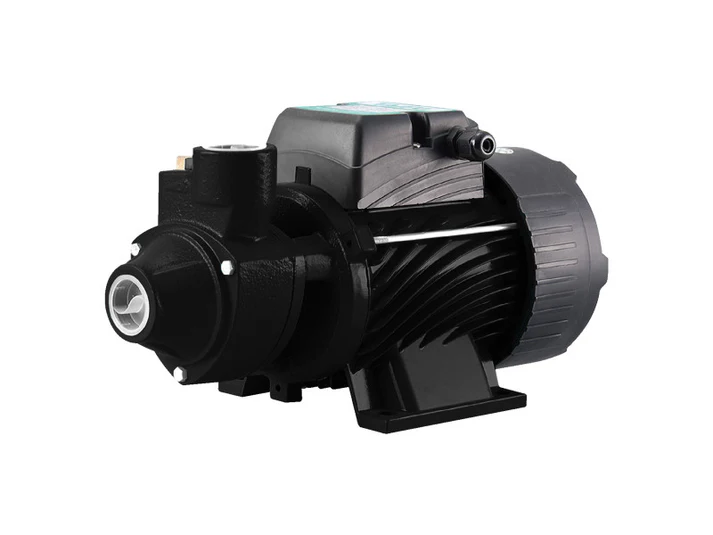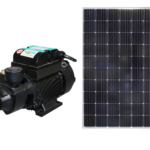Blog
Solar-Powered Booster Pumps in Kenya

Solar powered booster pumps are best for low consumption water supply in areas with limited connection to electricity.
Aqua Hub’s range of pumps include quality solar-powered booster pumps for high pressure water needs in endless water needs. Our pump devices are affordable and known for durable and top performance.
Call 0790719020
What is a Solar‑Powered Booster Pump?

A solar-powered booster pump is a device that uses solar energy to boost water pressure in applications where high pressure is required. Solar booster pumps are applicable for high pressure home applications such as showers, toilets flushing, kitchen taps and lawn watering. They are also ideal for farm irrigation. These helpful systems are eco‑friendly, low‑maintenance, and cut down on electricity bills.
Cost of Solar Powered Booster Pumps in Kenya
Solar Booster Pumps in Kenya are between KES 30,000 to KES 150,000 depending on the size and brand.
Call 0790719020
Features of Solar-powered Booster Pumps
- The pump body is designed with cast iron.
- Motor body is made of aluminum metal.
- Peripheral Brass impeller
- Silicon Carbide mechanical Seal
- Inbuilt controller for thermal and excess voltage protection. Can be connected directly to a 500W, 24V Solar Power Supply.
Benefits of Solar-Powered Booster Pumps
Energy Saving
After installation, the pump operates using sunlight without incurring monthly electricity costs.
Environmentally friendly
Transitioning to solar energy greatly lowers your carbon footprint and aids in the fight against climate change.
Dependable water source for off-grid use
In isolated or off-grid areas, solar booster pumps supply water without depending on unstable power sources. This signifies water for agriculture, animals, or domestic needs, even in distant locations.
Lower or Zero Running Costs
While initial expenses might exceed those of conventional pumps, the savings on energy costs over the lifespan and the simplicity of maintenance can recoup the investment in as few as 5 years.
How It Works: Components & Operation
Main components:
- PV solar panels, which convert sunlight into electricity
- A charge controller / MPPT tracker, optimizing power output and protecting the pump from voltage issues
- A DC or AC pump, sometimes with variable speed drive (VSD) for efficient pressure control
- Optional batteries or backup inverter, if night/cloud cover support is desired.
Operation:
- Solar panels produce electricity when the sun is shining.
- The controller manages output and safeguards the system.
- The pump extracts water and enhances pressure, automatically adjusting its speed if it has a VSD.
Certain models are designed with dry run protection, overcurrent protection, and automatic shutoff when water is not accessible.
Types of Solar-Powered Booster Pumps
Surface pumps
Installed above ground, ideal for shallow sources like ponds, tanks, or cisterns. Easier to install and service.
Submersible pumps
Installed underwater in wells or boreholes. Better for deeper sources, more efficient but harder to access.
AC vs DC pumps
DC pumps are common for small to medium systems (up to 4 kW), typically more efficient and simpler.
AC pumps (0.15–55 kW) require an inverter but power larger setups.
Applications of Solar Booster Pumps in Kenya
- Agricultural Irrigation: perfect for drip or sprinkler setups, particularly in areas lacking consistent grid electricity. Reduces fuel/electricity expenses and enhances output.
- Water provision for livestock: reliable, off-grid water supply for distant pastures or farms.
- Household Water uses ideal for tall residential buildings, enhancing solar hot water systems, or low-pressure setups in off-grid residences.
- Commercial & industrial Water Usage: minor production facilities, eco-friendly hotels, car wash services, and others requiring water pressure while minimizing energy expenses.
How to Choose the Right Solar Booster Pump: Sizing & Selection
Calculate your needs:
- Flow Rate requirement (Q): How much water do you need each day (liters or cubic meters per day)?
- Head (H): What vertical lift or pressure boost is required? Measure in meters or PSI.
Match pump to solar array (PV panel Capacity)
Use pump spec sheets to size the PV array wattage and voltage for the required flow/head.
Account for seasonal sunlight hours, especially winter minimum, when sizing panels.
Additional considerations:
- Choose surface or submersible depending on your water source depth.
- Prefer VSD / brushless motors for greater efficiency.
- Look for intelligent protection features: dry-run shutoff, low/high current, soft‑start.
Installation Tips
- Panel placement: Choose a sunny, unshaded location; orient and tilt for maximal sun exposure. Adjustable brackets help.
- pump mounting: Ensure stable, vibration‑free base, and good seals on all pipe fittings to prevent leaks.
- Electrical wiring & controllers: Use correct gauge wires, fuses, and grounding. Professional installation is often recommended for safety and compliance.
Maintenance of Solar Powered Booster Pumps
- Clean solar panels regularly (bird droppings, dust, debris reduce output significantly).
- Inspect pump seals, filters, and moving parts; replace or lubricate as needed.
- Check panels and voltage levels seasonally.
- Have annual or semi‑annual professional service if possible to extend lifetime and prevent downtime.
A well‑maintained solar booster pump can last 10–15 years, and solar panels themselves often come with 25‑year performance warranties.
Common Concerns with Solar Booster Pumps and their Solutions
- What about cloudy days or night use?
Certain systems include battery backup, or you can utilize water storage tanks as an alternative to batteries. Pump while it’s sunny to fill the tank and then use gravity to feed later. - Starting currents or pump overload?
Employ soft start or variable frequency drives to reduce initial surge currents. Carefully size the wiring and circuit breakers. - Compatibility with existing pumps?
Operating a solar booster alongside an electric well pump requires precise matching of flow rates and pressure, along with check valves to avert cross flows. Experts should create hybrid configurations.
Environmental & Regulatory Considerations
- Environmental impact: solar systems reduce reliance on fossil fuels and help conserve water through efficient irrigation methods. Assess land and water use impacts carefully.
- Regulations & standards:
- Check local permits or codes for solar installations.
- Purchase equipment from certified suppliers for safety, performance, and quality assurance.
Recommendation of Solar Booster Pumps in Kenya
In Kenya, solar booster pumps like the Shiyuan 0.5 HP 24 V surface pump are reliable, offering a 25 m head and 2,200 l/h, and no inverter required only direct DC connection. Ideal for irrigation or domestic boosting.
DC setups with charge controllers and/or linear current booster (LCB) systems can avoid need for large batteries. It’s design is to run only when sun is strongest is efficient
